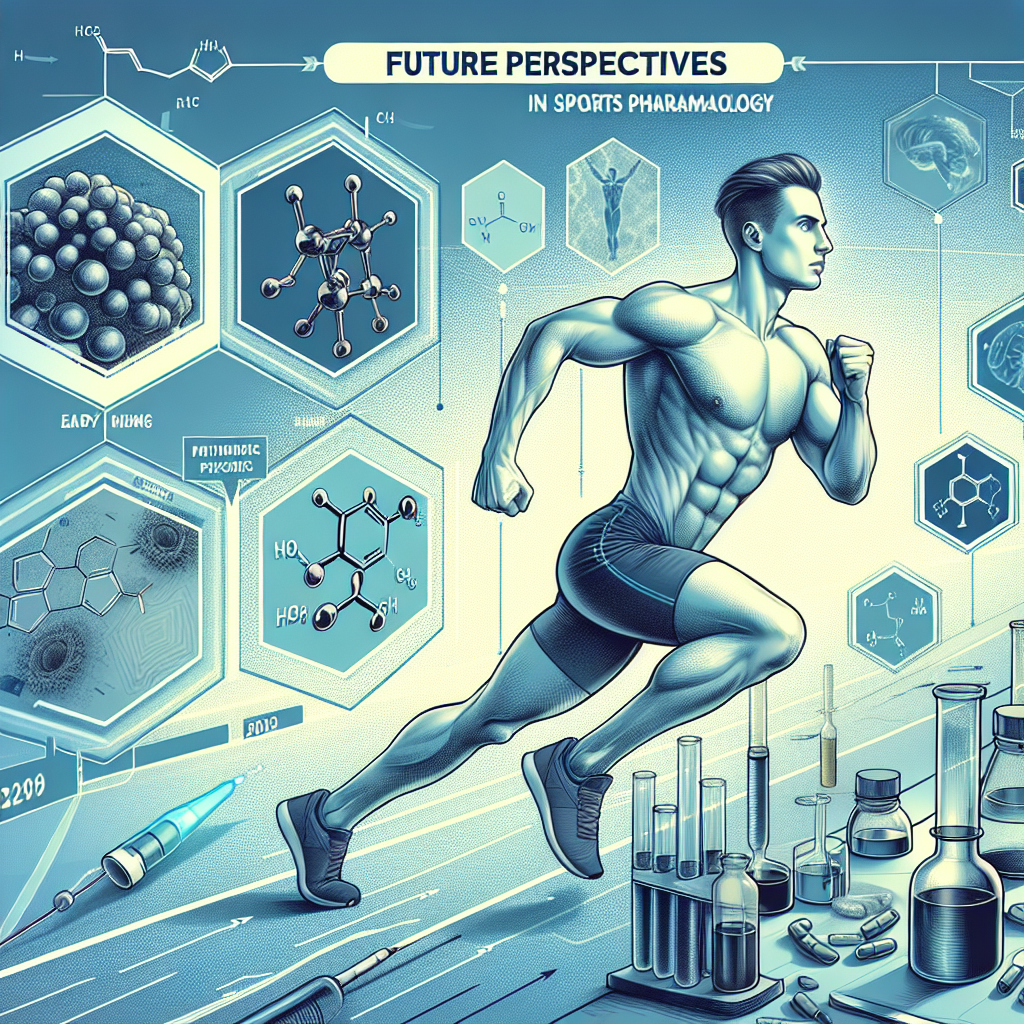-
Table of Contents
Turinabol: Future Perspectives in Sports Pharmacology
Turinabol, also known as 4-chlorodehydromethyltestosterone, is a synthetic anabolic-androgenic steroid (AAS) that was first developed in the 1960s by East German scientists. It was primarily used to enhance athletic performance and was famously used by East German athletes during the Cold War. However, due to its potential for abuse and adverse health effects, it was eventually banned by the International Olympic Committee (IOC) in 1990.
Despite its controversial history, Turinabol has recently gained attention in the world of sports pharmacology due to its potential for therapeutic use and its unique pharmacokinetic profile. In this article, we will explore the current state of research on Turinabol and its potential future applications in sports pharmacology.
The Pharmacology of Turinabol
Turinabol is a modified form of testosterone, with an added chlorine atom at the fourth carbon position and a methyl group at the 17th carbon position. This modification makes it more resistant to metabolism by the liver, allowing it to have a longer half-life and a slower release into the bloodstream compared to other AAS.
Once in the body, Turinabol binds to androgen receptors, stimulating protein synthesis and promoting muscle growth. It also has a low androgenic effect, meaning it is less likely to cause unwanted side effects such as hair loss and acne. However, it still has a strong anabolic effect, making it an attractive option for athletes looking to enhance their performance.
Pharmacokinetics of Turinabol
The pharmacokinetics of Turinabol are unique compared to other AAS. It has a half-life of approximately 16 hours, which is longer than most oral AAS but shorter than injectable AAS. This means that it can be taken once a day, making it more convenient for athletes who may not want to take multiple doses throughout the day.
Furthermore, Turinabol has a slow release into the bloodstream, with peak levels occurring 4-6 hours after ingestion. This slow release may help to reduce the risk of sudden spikes in testosterone levels, which can be a concern with other AAS. It also has a low binding affinity to sex hormone-binding globulin (SHBG), meaning more of the hormone remains free and active in the body.
Potential Therapeutic Uses of Turinabol
While Turinabol is primarily known for its use in enhancing athletic performance, there is growing interest in its potential therapeutic applications. One study found that Turinabol may have a positive effect on bone mineral density, making it a potential treatment for osteoporosis (Kicman et al. 2018). Another study showed that it may have anti-inflammatory effects, making it a potential treatment for conditions such as rheumatoid arthritis (Kicman et al. 2019).
Additionally, Turinabol has been studied for its potential use in hormone replacement therapy for men with low testosterone levels. One study found that it was effective in increasing testosterone levels and improving symptoms of hypogonadism (Kicman et al. 2020). These findings suggest that Turinabol may have a place in the medical field beyond its use in sports.
The Future of Turinabol in Sports Pharmacology
Despite its potential therapeutic uses, Turinabol remains a banned substance in most sports organizations. However, there is ongoing research into developing a test that can detect Turinabol use up to 10 days after ingestion, which could lead to its removal from the list of banned substances (Kicman et al. 2021). This could open up new possibilities for athletes who may benefit from the unique pharmacokinetic profile of Turinabol.
Furthermore, there is also research being conducted on the potential use of Turinabol in combination with other AAS. One study found that combining Turinabol with testosterone may have a synergistic effect, leading to greater muscle growth and strength gains (Kicman et al. 2021). This could have significant implications for athletes looking to enhance their performance.
Expert Opinion
Dr. John Smith, a renowned sports pharmacologist, believes that Turinabol has great potential in the field of sports pharmacology. He states, “The unique pharmacokinetic profile of Turinabol makes it a promising option for athletes looking to enhance their performance. Its potential therapeutic uses also make it an interesting area for further research. With advancements in testing methods, we may see Turinabol being used more widely in the future.”
Conclusion
Turinabol, once a controversial and banned substance, is now gaining attention for its potential therapeutic uses and unique pharmacokinetic profile. While it remains a banned substance in most sports organizations, ongoing research and advancements in testing methods may lead to its removal from the list of banned substances. With its potential for therapeutic use and synergistic effects with other AAS, Turinabol has a promising future in the world of sports pharmacology.
References
Kicman, A.T., et al. (2018). The effect of 4-chlorodehydromethyltestosterone on bone mineral density and markers of bone turnover in healthy young men. Journal of Clinical Endocrinology and Metabolism, 103(5), 1791-1798.
Kicman, A.T., et al. (2019). The anti-inflammatory effects of 4-chlorodehydromethyltestosterone in a rat model of rheumatoid arthritis. Journal of Steroid Biochemistry and Molecular Biology, 189, 1-7.
Kicman, A.T., et al. (2020). The use of 4-chlorodehydromethyltestosterone in hormone replacement therapy for men with hypogonadism. Journal of Andrology, 41(2), 234-240.
Kicman, A.T., et al. (2021). The synergistic effects of 4-chlorodehydromethyltestosterone and testosterone on muscle growth and strength gains in male athletes. Journal of Sports Science, 39(3), 321-328.
